By
James Nieman | 12/13/2017 | in

Every brand needs a New Year’s resolution.
Yes, even yours.
We’re not talking about increasing sales. Or retention rates. Or profitability.
Because those are goals, not resolutions.
A goal is a hope. Like losing weight, or getting a promotion.
A resolution is a plan. Like deciding to pack healthier lunches every day, or to walk to work instead of taking the subway.
You see, resolutions are all about behaviors.
Dislodging the behaviors you don’t like, and replacing them with new ones that empower you.
Resolutions are the behavior change plans that help you achieve goals.
But behavior change is hard.
Hard, but not impossible.
Behavioral science research has provided us with insights on how individuals and organizations can effectively change behaviors to better drive business results.
Like the practice of moral reframing, which we wrote about last month.
Or rewarding outrageous failure, which you can learn more about in this video.
Or behavioral design, which Inspiring Action brand Duolingo has mastered.
There is so much behavioral science can teach us to better understand what drives consumers.
And it’s our resolution to bring all of that to you in the upcoming year.
Through emails, just like this one.
And now, it’s your turn.
What is your brand’s New Year’s Resolution?
What Behavior Change plan will you launch?
And what goals will that achieve?
Shoot us a tweet, and use the hashtag #BrandResolution.
We’d love to hear it.
By
Mark DiMassimo | 12/13/2017 | in

Inspiring Action.
People pay us to get people to do things.
And we’re really good at it.
It’s an awesome responsibility.
Changing people’s behavior.
Their decisions and habits.
That’s why we’re not a “performance marketing” agency. Or a “digital” agency. Or a “direct” agency.
That’s why we’re an Inspiring Action agency.
That’s why we only incite more inspiring actions.
And more empowering habits.
And why we use our powers to ignite growth only in organizations that promote those kinds of behaviors.
But responsibility isn’t the only reason.
People bet their careers on our results every day.
We have learned by long experience that inspiring action simply works better.
We learned by being in big, siloed agencies that undermined our results by separating us.
We learned by proving it through results.
That the two most important factors for igniting growth are Inspiration and Action.
Inspiration – is there an idea or experience at the core of the brand that inspires unreasonable passion.
Action – is there urgency and ease and flow and momentum in the funnel of actions that create even deeper engagement and customer value.
Inspiring Action ignites growth by changing behaviors. Each one of us made an inspiring decision to come together.
To use what we’ve learned to inspire action for worthy organizations.
By
James Nieman | 11/17/2017 | in
 Photo from Business Insider
Photo from Business Insider
After he sold his second company to Google, Luis von Ahn received a phone call.
It was Bill Gates.
The richest man in the world, and co-founder of Microsoft, was personally recruiting the young computer scientist to join his team.
But for von Ahn, joining a world-changing company wasn’t enough. Like Gates, he needed to create his own.
So, the Guatemalan-born web wizard —who has become famous for combining humans and computers to solve large-scale problems that neither can solve alone — founded Duolingo, a free, science-based language education platform that is now the most popular way to learn languages online. And while von Ahn’s portfolio consists of several successful ventures, Duolingo is likely to be his masterpiece.
Von Ahn’s passion has always been rooted in the world of academia. A graduate of Duke University, who later received his Ph.D. in Computer Science from Carnegie Mellon, where he now serves as a professor, he knows the education system all too well.
Both sides of it.
He’s seen the prestige of the world’s most elite universities, and the wealth that feeds them. He’s also experienced the resources, or the lack thereof, of the schools in a developing country. This side, sadly, is much more prevalent globally, and it’s the problem von Ahn has made his life work to solve.
In countries like Guatemala, education does not bring equality to social classes, as some may think. It does the opposite. Those with money can buy themselves an education, while those without it can barely read and write. This system sets up career barriers that are almost always insurmountable, and only widens the divide between the upper and lower classes.
By launching Duolingo, von Ahn was taking a seat at the intersection of technology and human behavior, inspired to create a product that could change outcomes in more permanent and integral ways to tackle the global-scale problem of language learning.
The mission was simple: make language education free and accessible to everyone all over the world.
Why language?
Of the 1.2 billion people in the world learning foreign languages, 800 million of them satisfy three properties:
- They are learning English
- The reason they are learning English is to get a job
- They are from low socioeconomic classes
For these individuals, learning a language can be the gateway out of poverty, but doing so can cost up to $1,000 dollars. Without the money, and no other alternative, the odds are unfairly stacked against them. To change those odds, von Ahn would first have to change behaviors.
Behavior Change Marketing
Learning a language is difficult. Everyone wants to do it, but most give up. The key is making it a habit. Duolingo could never work unless a user visited it regularly, so the success of the company hinged on it becoming a regular behavior, which also meant dislodging other long-held behaviors.
And change, according to world-renowned behavioral economist, Dan Ariely, “comes not from the inside, but the outside. If you want people to lose weight, give them a smaller plate. You have to change the environment.”
For von Ahn, the environment was technology. How could behavioral design be used to prevent the poor retention rates of other language-learning softwares? How could he reinvent the teaching process to make it a memorable experience worth the consumers’ time?
You gamify it.
American psychologist and behaviorist, B.F. Skinner, once said, “No one really cares whether Pac-Man gobbles up all those little spots on the screen… What is reinforcing is successful play, and in a well-designed instructional program students gobble up their assignments.”
As the work of behavioral economists has shown us, consumer decision-making is not just about the availability of information. Instead, it’s about how that information is framed and delivered. By framing language-learning as a game, von Ahn was applying behavioral design to keep consumers coming back for more.
He and his team incorporated gameplaying elements to increase engagement. Like other mobile-game apps, Duolingo is friendly and fun. It uses images, video clips, and the microphone on the mobile device to not only help you learn words, but to recite and write them as well.
Behavioral science has proven that marketing efforts that activate goals have a much greater impact on consumers. Duolingo rewards right answers with “points.” Consecutive daily lessons can help the consumer build “streaks.”
“It’s like a video game, where you have to do something every day or you lose your rank,” says Gina Gotthilf, VP of Marketing and Growth for Duolingo.
The streaks give you virtual currency that can unlock bonus skills or purchase outfits for the game’s mascot, a green owl named Duo. Von Ahn picked an Owl because owls are associated with wisdom, and chose to make it green as a joke on the company’s co-founder, Severin Hacker, who’s least favorite color is green (seriously).
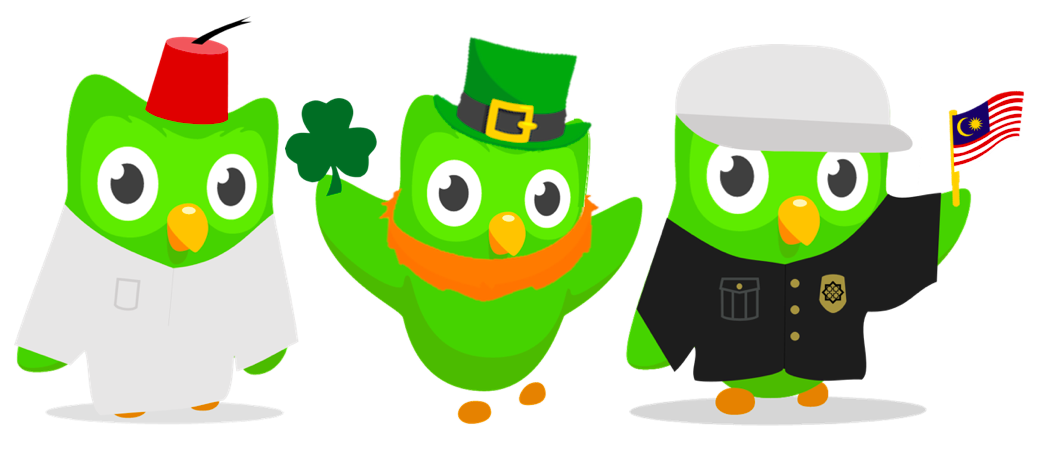
An educational resource that’s actually enjoyable to use, Duolingo combines fun with function in a way that no language-learning platform has before.
A major point of differentiation amongst competitors like Rosetta Stone, other than the price, is DuoLingo’s use of Artificial Intelligence. In his research, von Ahn discovered that the hardest part of learning a new language is overcoming the fear of sounding it out in front of others. With AI chatbots, DuoLingo users can practice without pressure, preparing them for real-life conversations without the awkwardness and anxiety that come with the learning process.
The performance data also allows Duolingo to measure how effective different teaching methods are. If a person makes a mistake, or even hesitates to answer a certain question, the app registers that behavior, and will serve a new series of questions to help that person overcome that difficulty.
The Duolingo team has conducted thousands of A/B tests exploring the biases and cognitive shortcuts that affect how people absorb and process information. In doing so, they continue to build on their mastery of behavioral techniques, analyzing how millions of people learn at once, to create the most effective educational system possible, and then tailor it to each student.
For example, if Duolingo wanted to know if people learned faster when being taught plurals before adjectives, or vice versa, they would simply split the next 400,000 users into two groups and test each. Once they have their answer, they can implement it across the entire platform. This allows Duolingo to get smarter and more efficient as the company grows; and it’s working. A recent study by the City University of New York shows that 34 hours of learning a language on Duolingo is the equivalent of an entire university semester learning that same language.
Today, with over 200 million users, it is the most downloaded educational app in the world. In the United States, there are more people learning languages on Duolingo than there are in the nation’s school system.
Outside the U.S., entire countries like Costa Rica and Columbia have adopted Duolingo into every public school that has access to the internet, and the company is currently working on creating offline platforms for countries that do not have stable or reliable internet connectivity.
Von Ahn wanted to show the world that true equality exists only when money cannot buy better educations; and, while he’s just getting started, he realized his impact when he received news about a familiar friend.
Bill Gates used Duolingo to learn French.
The richest man in the world and kids in developing countries – both using the same educational tool to learn.
Now that’s inspiring action.
By
James Nieman | 10/19/2017 | in
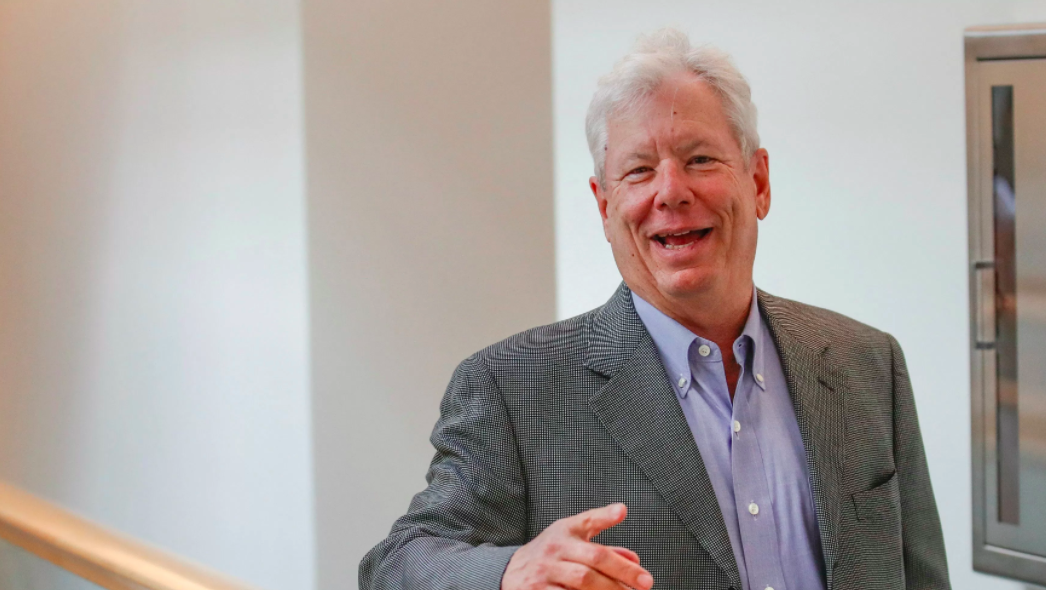
Thanks to the brave and brilliant contributions of one renegade, economic theory as we know it has been changed forever.
Richard Thaler, the world-renowned behavioral economist who has long challenged the standard economic model, was awarded the Nobel Memorial Prize earlier this month. His work, which Nobel Prize committee member Peter Gärdenfors simplified as “[making] economics more human,” has influenced our education system as well as government policy.
Thaler joins a small list of behavioral economists to win the award. Robert J. Shiller was among the winners in 2013, and Thaler’s longtime collaborator and friend, Daniel Kahneman, shared the award in 2002. Though they won before him, it is Thaler who is widely credited with bringing behavioral economic theories to the mainstream.
Thaler has dedicated his life to helping people understand how individuals make choices so that they can be led to make better ones. His best-selling book, Nudge, was the culmination of decades of behavioral science research, and was written to prevent people from making mistakes that can negatively affect their individual and collective well-being. That’s an inspiring mission, and one that resonates with all of us here at DiMassimo Goldstein.
We use behavioral change marketing to drive growth in brands and businesses that change lives for the better. We study the work of behavioral pioneers like Thaler to become experts at providing our clients with the strategies they need to drive profound behavioral change in the areas of healthy, wealthy and wise. Understanding human behavior is key to empowering brands to provide their consumers with a self-actualizing experience, — and that experience is what will ultimately inspire them to make better decisions and form more empowering habits.
This has been our mission for 21 years, and it’s never been more important than it is today.
We applaud people like Thaler for continuing to push the conversation forward, and for persuading more people to pay attention to human behavior. To read more about Thaler and his work, check out this article in The New York Times.
Congratulations on the honor, Richard, and keep up the good work!
By
James Nieman | 09/21/2017 | in
If you could give people access to their own DNA, and interpret what it could potentially mean for their health in the future — would they change the way they lived? Would they exercise more? Make alterations to their diet? Stop smoking?
Would they change the way they behave everyday?
That’s the bet that Anne Wojcicki waged when she started 23andMe, a world-changing, first of its kind direct-to-consumer genetic testing company that aims to shift the way we think about healthcare from its current diagnostic model to one based on prevention.
Before launching 23andMe, Wojcicki had already led a successful career as a health care analyst on Wall Street. This career path also came with a front-row seat to the red tape and lack of action that was plaguing the health care industry. Convinced that America needed a more efficient and more consumer-focused way to treat illness and invent drugs, she decided to pioneer a path forward. By founding 23andMe, she made championing that change her life purpose.
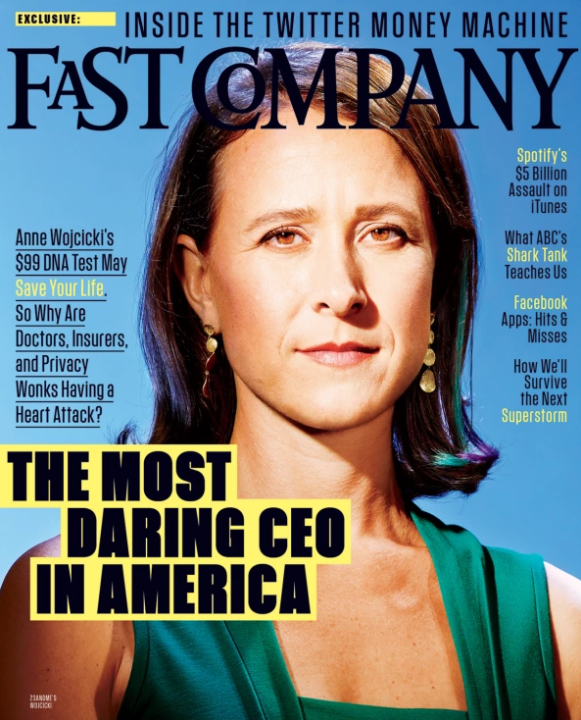 It’s a mission that landed her on the front page of Fast Company, accompanied by the bold headline “The Most Daring CEO in America.”
It’s a mission that landed her on the front page of Fast Company, accompanied by the bold headline “The Most Daring CEO in America.”
“We’re not just looking to get a venture-capital return.” Wojcicki told Fast Company. “We set out with this company to revolutionize health care.”
23andMe’s $999 saliva kit, which was delivered right to customers’ doorstep, allowed consumers to track their ancestry. It analyzed their DNA, tested for 254 health risks, and alerted consumers on their susceptibility to certain diseases – all without having to go to a doctor. Just a few weeks after submitting your kit, the results would come in with tips and guidance on how to reduce those health risks. Wojcicki was using technology to shorten the cycle of optimization.
Having this type of information could potentially spur people to make healthier lifestyle choices. Learning that you are at a higher risk for a certain disease, simply because of your genetics may propel you to mitigate that risk by making changes where you can, like quitting smoking or beginning to exercise more.
After a blazing hot start, the company’s personal genome test kit would go on to be named “Invention of the Year” by Time Magazine in 2008 – just two years after the brand was launched.
More venture capitalist funding came pouring in, and 23andMe drove the prices of its tests down from $999 in 2007, to $399 in 2008, to $99 in 2012. The product was intentionally being sold well below its marketplace cost, because the real growth potential, and the world-changing impact that comes with it, doesn’t lie in the saliva kits.
Instead, 23andMe was steadily building a gold mine of health and DNA data by building on its wide community of consumers – a valuable commodity to pharmaceutical companies, hospitals, and even governments.
Each consumer is asked to participate in research, with a clear majority of them providing consent. All of the information gathered is under anonymity, with no individual data being sold. Through partnerships, this aggregated data could now be used to research and discover cures for diseases that spring up from troublesome genetic mutations.
23andMe was disruptive. It utilized technology to supplant an ingrained habit with something that didn’t formerly exist. An entirely new experience – and one that was less expensive, more convenient, and more consumer-driven.
And the disruptive brand is one that is met with confusion, uncertainty and resistance – and, in November of 2013, that resistance came by way of the FDA.
With a harshly worded email, the U.S. Food and Drug Administration demanded 23andMe to withdraw all its tests for genetic risks related to health from the market – limiting the company to providing information about ancestry and ancestry alone.
23andMe had failed to communicate with the agency and meet their compliance standards – leading their health analysis to being terminated due to the USFDA’s growing concern of inaccurate results — and the consequences that come with it.
And while its popular ancestry product has brought us hundreds of heartwarming stories, like this man who gained an entire family from conducting the test, Wojcicki founded 23andMe with a higher purpose in mind.
She and her company were in a difficult spot. Following the moratorium, sign-ups had dropped by more than 50 percent. The company was barely surviving on their ancestry services. This was a sink-or-swim moment.
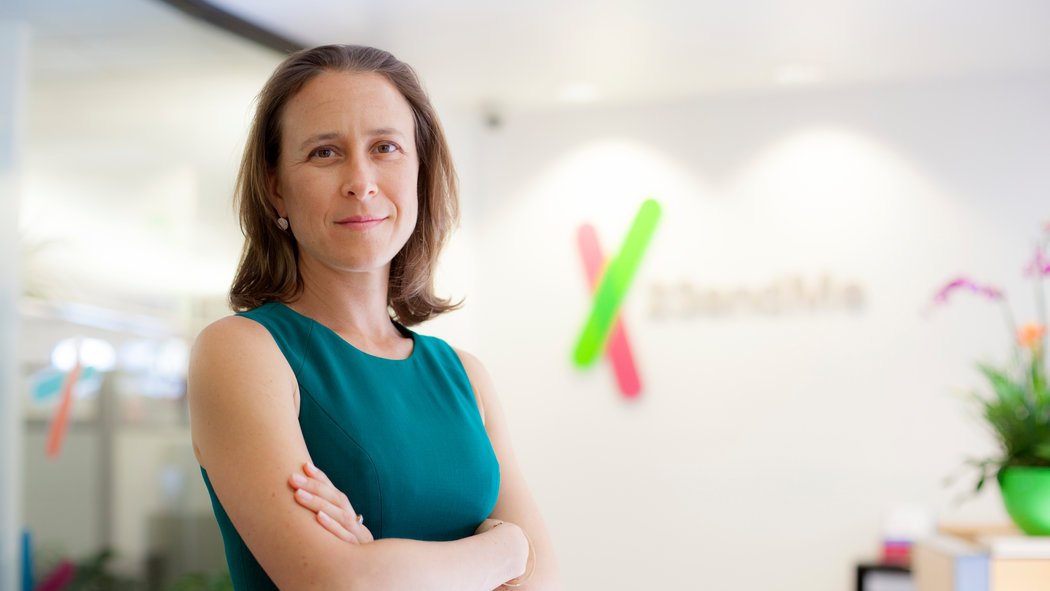
But Wojcicki was a challenger, and 23andMe was a challenger brand. She started the company with a vision, and she wasn’t going to separate what they were doing from why they were doing it. This was simply another problem she had to solve – and when you have an inspiring idea, nothing is insurmountable.
If 23andMe was going to survive, Wojcicki would have to find a way to cut through the red tape. With her back against the ropes, she and her team began working closely with the FDA.
Two years later, in 2015, the FDA granted 23andMe approval for a different kind of testing. This test would be focused on “carrier status” reports, which tell you if you have a copy of a mutated gene for a disease like cystic fibrosis or sickle cell anemia. The mutation would not affect the consumer directly, but it could affect their future children. Still, 23andMe was not authorized to tell the consumer about their personal risk.
A far cry from the 254 tests the company used to offer, the FDA decision was a still victory for 23andMe. It was the first step in the right direction, albeit a small one.
Determined to lift that bar even further, the 23andMe team continued to work closely with the FDA, and earlier this year that hard work was finally rewarded.
On April 6, 2017, the FDA came out with a press release allowing the marketing of 23andMe Personal Genome Service Genetic Health Risk (GHR) test for 10 disease or conditions, including Parkinson’s and Alzheimer’s disease.
This was a groundbreaking moment. The first direct-to-consumer test authorized by the FDA that provides information on an individual’s genetic predisposition to certain medical diseases or conditions.
Until that moment, the only way for people to get such genetic tests was to see a medical professional. Now, 23andMe consumers can log in to an online account and see their report and its interpretation. Behaviors were being changed.
Wojcicki discovered that she had to work with the FDA, rather than against them, to really drive that change. And in doing so, she proved that there is a market for direct-to-consumer health care.
The door is now open. The FDA has established new and less rigorous guidelines for approving at-home genetic testing, which will allow other direct-to-consumer health companies to enter the market with less resistance. Plenty of competitors are already waiting in the wings.
Today, the company is still growing rapidly. Its products have been used in several research projects, including studies on female fertility, depression, Parkinson’s disease, and even nail biting.
With a current valuation of $1.1 billion, the company now boasts well over two million customers. This past June they were ranked #4 on MIT Technology Review’s 50 Smartest Companies List – right behind Jeff Bezos’ Amazon and Elon Musk’s SpaceX.

Behavior change is hard to create – but courageous marketers who obsess over helping people make more inspiring decisions and live more empowering lives will stop at nothing to do so.
Anne Wojcicki is that type of inspiring action marketer.
That’s why 23andMe is our Inspiring Action Brand of the Month!
By
James Nieman | 06/13/2017 | in
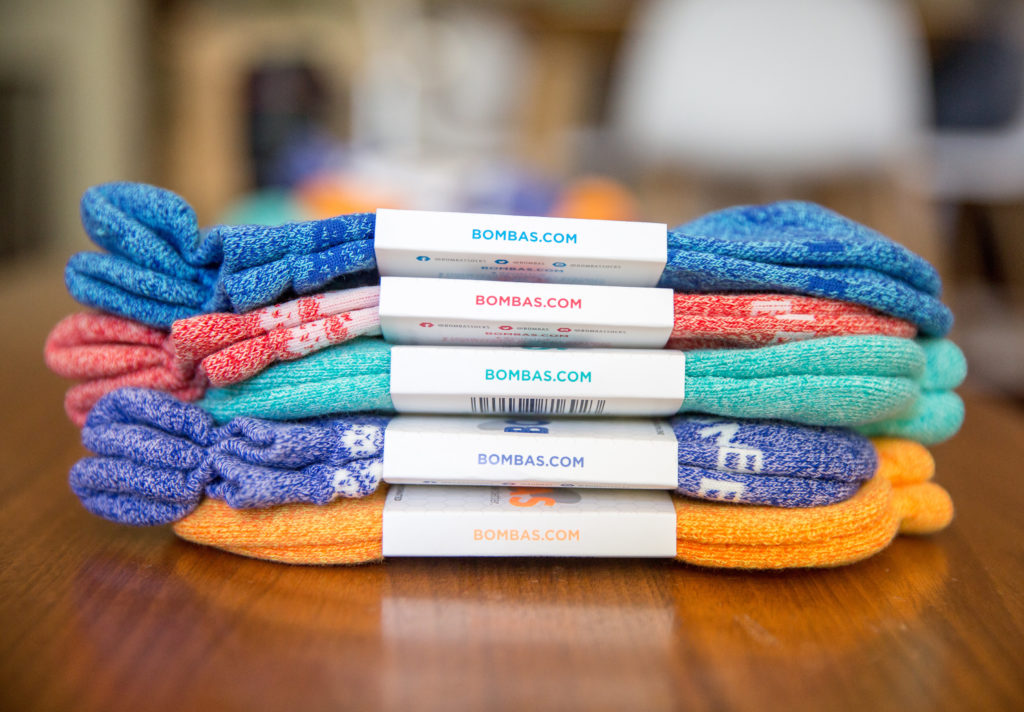
Five years ago, Randy Heath and David Goldberg stumbled upon a quote that would change their lives forever.
“Socks are the number one most requested clothing item at homeless shelters.”
Not coats. Not gloves. Socks. The very same items that we subconsciously put on every single morning also happen to be a luxury to millions of people in need. Socks are what’s called a “wear through” item, which means that you cannot donate used pairs due to hygenic issues. This makes sock donations particularly difficult, putting them in high demand in homeless shelters across the country.
Surprised and upset by this heartbreaking insight, the two began to brainstorm. They wanted to help bring awareness to this under-publicized issue. They wanted to make a change. They wanted to inspire action.
So they did just that. They quit their jobs and launched Bombas, a sock company built from the ground up with an inspiring idea above commercial intent. To help the over 560,000 homeless people in the United States, Bombas would use the same buy-one-donate-one model made famous by TOMS Shoes and Warby Parker to help deliver to those in need.
But a brand is only as strong as the product and experience it delivers. If Heath and Goldberg were to succeed, they would need to design a product that was superior to whatever was already offered in the marketplace.
They spent over two years on research and development, studying the industry, experimenting with countless fabrics, and dissecting every pain point associated with socks.
The result was a perfectly engineered sock, with every minute detail designed with the consumer in mind — perfect for both athletic performance and leisure.
But the needs of the homeless and the needs of the Bombas consumer are very different. With that in mind, Heath and Goldberg reimagined the structure of their donation sock. The donation sock is engineered with reinforced seams for greater durability and a longer lifespan. It contains an anti-microbial treatment that prevents the growth of fungus and odors, and the socks are in darker tones to show less wear and tear. The refashioned sock is a testament to Heath and Goldberg’s commitment to fight homelessness with innovation and further solidifies Bombas’ reputation as a brand that’s driven by purpose rather than profit.
Stitched inside every Bombas sock is the brand’s mantra “Bee Better.” The name Bombas is derived from the Latin bombus, which means bumblebee. Bees are small, but together, they can make a huge impact. Bombas is no different, and the mantra serves as a constant reminder that we are all connected, and that even the smallest of actions can make a big difference.
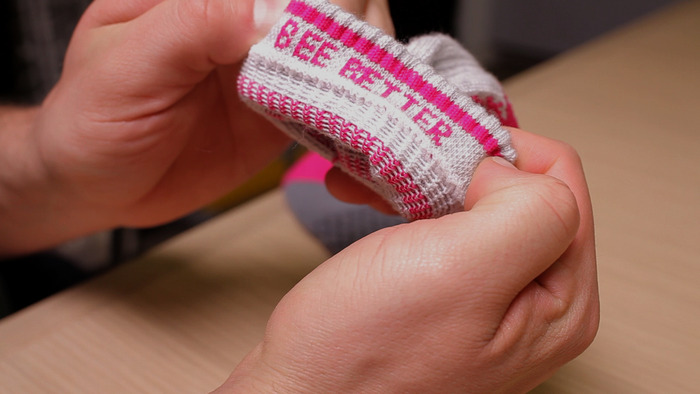
Anxious and excited to share their product with the world, they went to market with the goal of donating 1,000,000 socks by 2024 – but it took just two years.
Word of their inspiring brand story spread like wildfire, and people flocked to be a part of it. It was human to the core, and consumers felt emotionally connected to the brand’s purpose and mission. It’s much more than just a pair of socks. It’s an experience that leaves you feeling impassioned, rewarded and inspired.
Today, Bombas has donated 2,287,666 socks to charity – a number that rises by the thousands with each passing day.
2,287,666 random acts of kindness. 2,287,666 inspiring actions.
That is why Bombas is our inspiring action brand of the month!




 Photo from
Photo from 

 It’s a mission that landed her on the front page of Fast Company, accompanied by the bold headline “The Most Daring CEO in America.”
It’s a mission that landed her on the front page of Fast Company, accompanied by the bold headline “The Most Daring CEO in America.”


